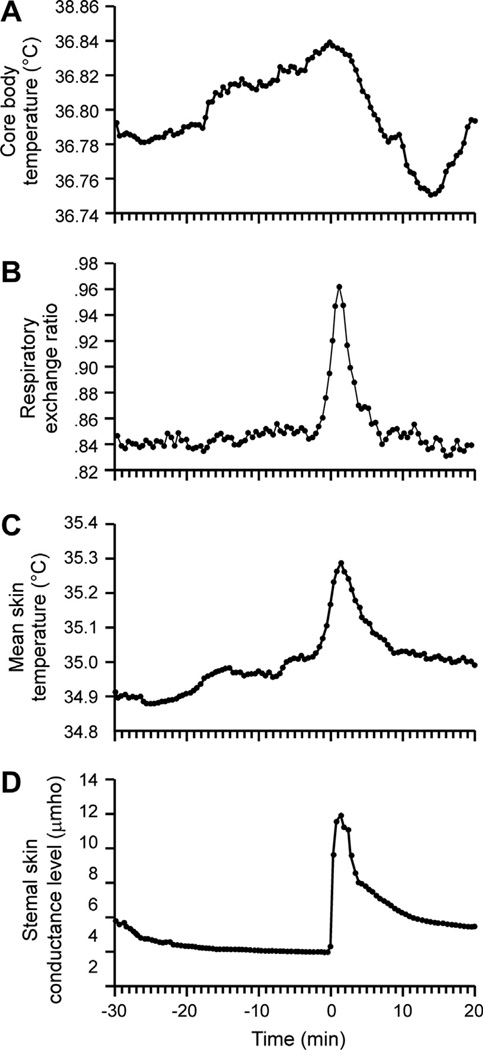Fig. 3.
(A) Average core body temperature, (B) respiratory exchange ratio (C) skin temperature and (D) sternal skin conductance recorded from 29 hot flushes in 14 postmenopausal women. Time 0 is the onset of the rise in sternal skin conductance. Vasodilatation and sweating (reflected in C and D, respectively) are physiological heat-dissipation effectors that are activated during hot flushes. A small increase in core temperature is seen before the flush, followed by a larger drop due to the activation of heat-dissipation effectors (A). Adapted with permission from Freedman (1998).

